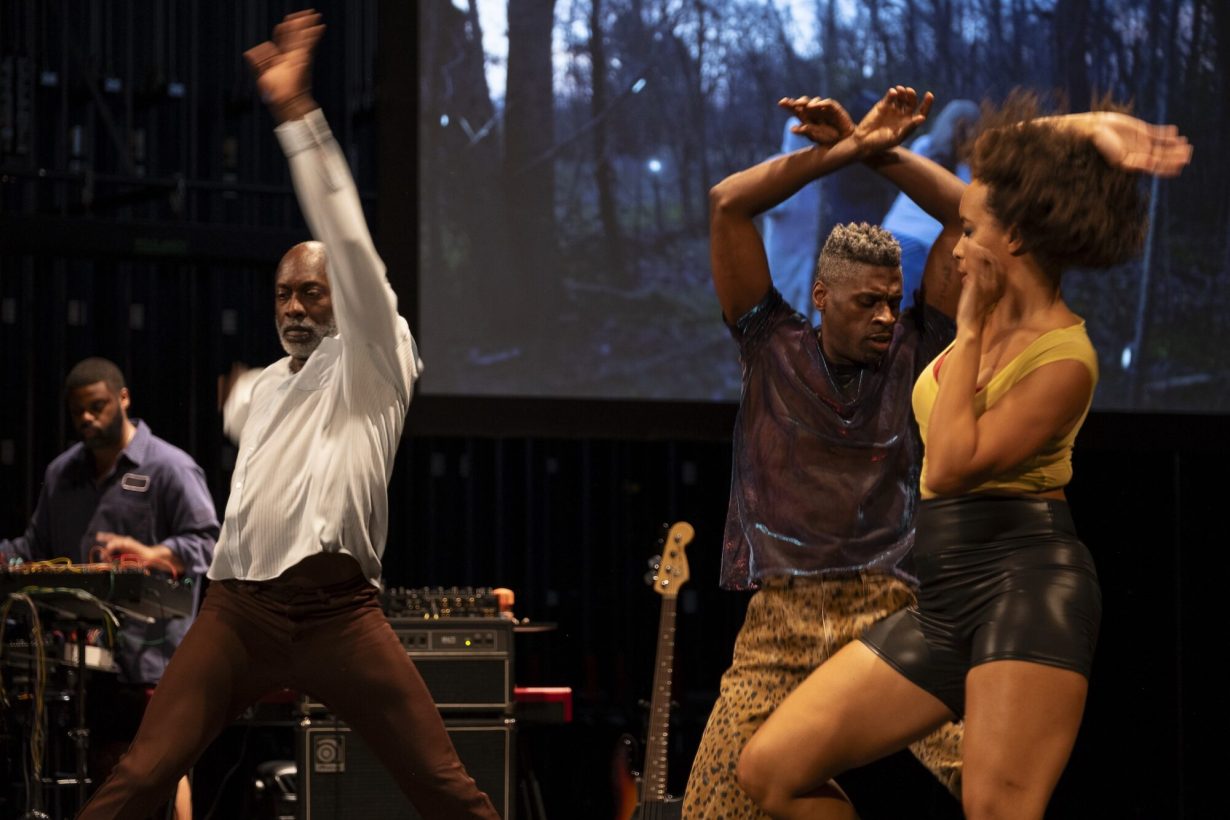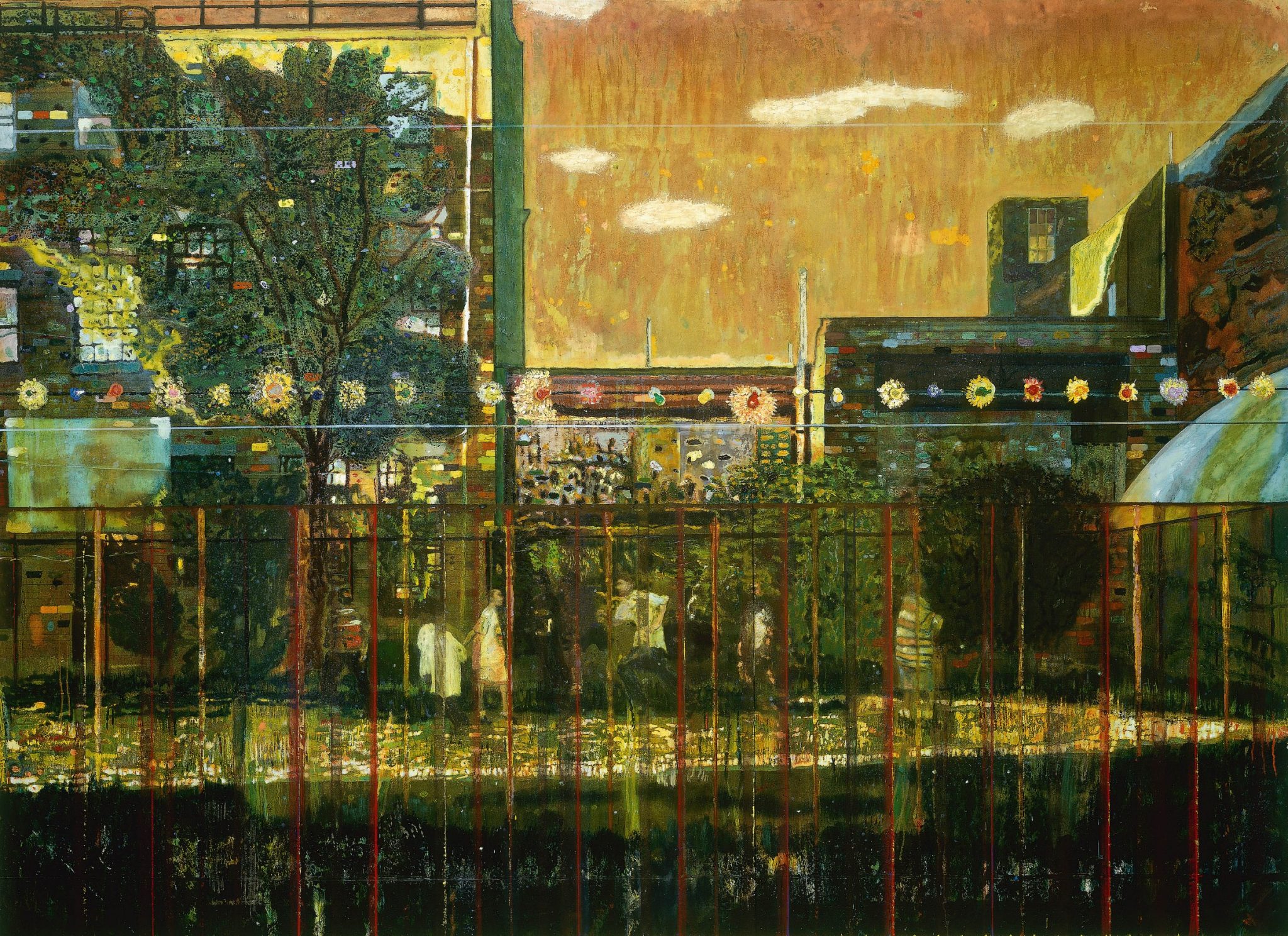In the wake of the US election, how can art illuminate the troubling interconnections between politics and place?
In the days preceding the US presidential election, I happened to see three good painting shows. The first was Giorgio Morandi – Time Suspended II, an exhibition of around sixty of the Italian painter’s impermeable still lifes and introverted landscapes made between 1913 and 1964, which had travelled from the Galleria Mattia De Luca in Rome to a pop-up in Lenox Hill. The second was The Street at Gagosian’s Upper East Side location, where it occurred to me, as I admired the stubbornly astigmatic lights strung across an urban promenade in Peter Doig’s Night Playground (1997–98), just how rhetorical and opinionated paintings could be, even in the expression of something as simple as light hitting the cornea. Then there was Scotopia, organised by the formerly Berlin-based gallery CABIN in the Two Bridges neighbourhood of Lower Manhattan. Among its charms were the walls: wood-panelled and stained black, they absorbed what little light was let into the small exhibition space, which held a selection of contemporary paintings subtly complemented by a tenth-century Indian sandstone relief and a pencil drawing by Matisse. Standing before a work of oil on linen by Suyi Xu depicting the abstracted interior of a grand Western edifice – recalling an anecdote the Brooklyn-based artist told me last year in her studio, about another gallery in Berlin where visitors had to enter a dark antechamber for a length of time, to, in effect, tune their eyes before seeing the art – I realised that the stained wall was grounding her muted palette and fine lines in a way that now seems indispensable.

In the eerily quiet days after the election, I took long walks, both alone and with others, and saw a lot of art, but none of it stuck. I kept returning to Raymond Williams’s notion of a ‘structure of feeling’, the sum of the inarticulate thoughts and nameless emotions competing to emerge as the spirit of the age in any moment in history, wondering if ours would be remembered as the prologue to a reactionary backslide or the coda of a 250-year empire. I wanted to know how counterparts in other US cities were faring, so the following week I called up Patrick Bova and Lucas Regazzi. The couple run april april, formerly a Brooklyn-based gallery. In May, they left New York for Pittsburgh, a mid-sized city in Pennsylvania (one of the seven key ‘swing states’ that swung right in the election). ‘We had an opening [for the group exhibition Muffler] on the Sunday before the election’, Bova told me, ‘and the crowd was pretty reticent. People seemed despondent’. Jack Schneider in Chicago recalled that on the morning after the election ‘people were not making eye contact in the streets’. Nevertheless, that week, Schneider’s gallery Prairie, which he co-runs with the artist Tim Mann, opened Dominion, a solo show of work by Justin Chance. Kelsie Conley in Knoxville, Tennessee – the conservative southern city whose suburbs I fled after high school – described the mood among arts professionals there as ‘weighty’. Despite the sense of having her hands tied as a voter, Conley told me, ‘I think there’s actually a lot of hope’. After our call, she would resume installing the artist Audrey Gair’s solo show Rind at her gallery Bad Water.

In ‘Goodbye to All That’ (1967), Joan Didion wrote, ‘I’m not sure that it is possible for anyone brought up in the East to appreciate entirely what New York, the idea of New York, means to those of us who came out of the West and the South’. While newscasters reckoned with the US and what its politics have come to represent, I found myself wrestling similarly with ‘the idea of New York’: the differences and similarities between the art scenes here and elsewhere, the social and material realities that artists and gallerists are facing, here and elsewhere. That weekend: a matinee of Ralph Lemon’s Tell it anyway (2024), performed on the occasion of the choreographer’s retrospective at MoMA PS1. Okwui Okpokwasili and April Matthis sang, and Lemon recited his dreams and threw bricks at plywood panels, inciting a tempest of dancers to execute feats of extremity and endurance. Midway through the show, Okpokwasili, spotlit behind a mic, pleaded, ‘Try to tell the story / Try / With terrible earnestness / It will all be for naught / Try to tell it anyway’. Her call was answered by Matthis, who, in the next three numbers, evoked scenes of travel and dislocation, lovesickness and loss: ‘I took a walk along the Seine, late last night’, Matthis sang. ‘It was raining, softly. No moonlight. One can’t buy a cheap disposable umbrella at a corner deli like home. I got wet. Was a little drunk. Felt perfectly alone, in such an old modern city. How unusual’. For a moment, through language, a multitude of imagined places – ideas of places – folded in on one another, and I felt lucky to be in their midst.
